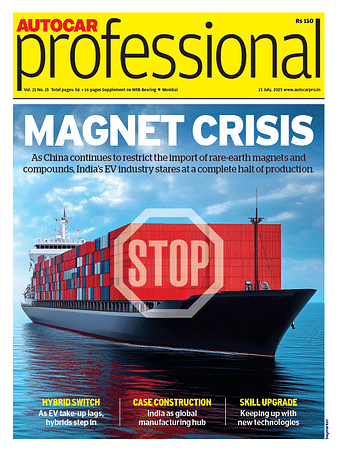Can the Merged Bharat Mobility Global Expo Be the Future of Auto Shows in India?
The Bharat Mobility Global Expo 2025, covering various sectors of the mobility ecosystem, highlighted emerging trends in electric three-wheelers, advancements in public transport, contributions from smaller innovators, and the need for more sustainable exhibition practices.
The Bharat Mobility Global Expo, comprising seven different expos across three exhibition venues, finally concluded on January 22. Initial estimates show that close to one million people visited the event, which, by the scale of the area covered, could easily be touted as one of the biggest in the world.
Just when sceptics were wishing away the traditional motor shows, India created a showcase for the world. Vehicles, components, batteries, steel, tyres, construction equipment, cycles and technology – all exhibits happening in tandem, covering the spectrum from B2B to B2C to D2C. Markets like India and China are sending outthe message that all is not over with the motor shows; only their format has evolved from focusing on just vehicles to now covering the entire mobility ecosystem.
There are four things I took back from the 2025 expo. One, the traditional two-wheeler space will soon be disrupted with electric ‘trikes’, scooters with a third wheel either in the front or back. There were many startups in the nooks and corners of the show displaying their interesting takes, right from commuter to adventure. This form factor could entice many more of us who currently stay away due to issues of safety, stability and ease of use.
Two, there were cool buses rubbing shoulders with the snazzy cars and bikes. That’s a very positive sign, and industry bodies should make it a point to promote more public transport solutions. Given a penetration of just 1.5 buses per 1,000 Indians, we not only need hundreds and thousands of more buses, but we need them to be on par with the best in the world.
Three: the hidden gems. There are small setups doing amazing work – right from Lapa Electric to River to Greenway to Helen Bikes – which, due to their lack of size, were relegated to the first floor, denied the chance to show visitors what they are doing. Brilliant minds that, with the right exposure and support, can do great things for our mobility landscape.
Four: unsustainable pavilions. That’s one big negative I carried back. The exhibitors, including the organisers, should learn to walk the talk on sustainability when they put up their shining edifices. The gross splurging on single-use wood, vinyl, plastics and flex is criminal. There should be awards given by the ministries involved to the most eco-friendly pavilions. Special mentions should be made to increase the basic awareness of corporate India to the fact that being ecologically responsible is not only about what you show but also how you show it!
RELATED ARTICLES
Creativity Reimagined: Auto Design in the Era of Artificial Intelligence
As AI accelerates design and product cycles tighten, automotive creativity is being redefined as a race against redundan...
Magnets of Disruption: How China’s Grip on Rare Earths Is Stalling India’s EV Dreams
As China tightens its grip on rare earth exports, Indian automakers risk delayed launches, disrupted festive season prod...
HYUNDAI CRETA EV: Off to a Slow Start
Hyundai has priced the electric version of its massively popular SUV close to the Rs 20 lakh range, where it has been fo...





 12 Feb 2025
12 Feb 2025
 4111 Views
4111 Views





 Prerna Lidhoo
Prerna Lidhoo



 Autocar Professional Bureau
Autocar Professional Bureau

